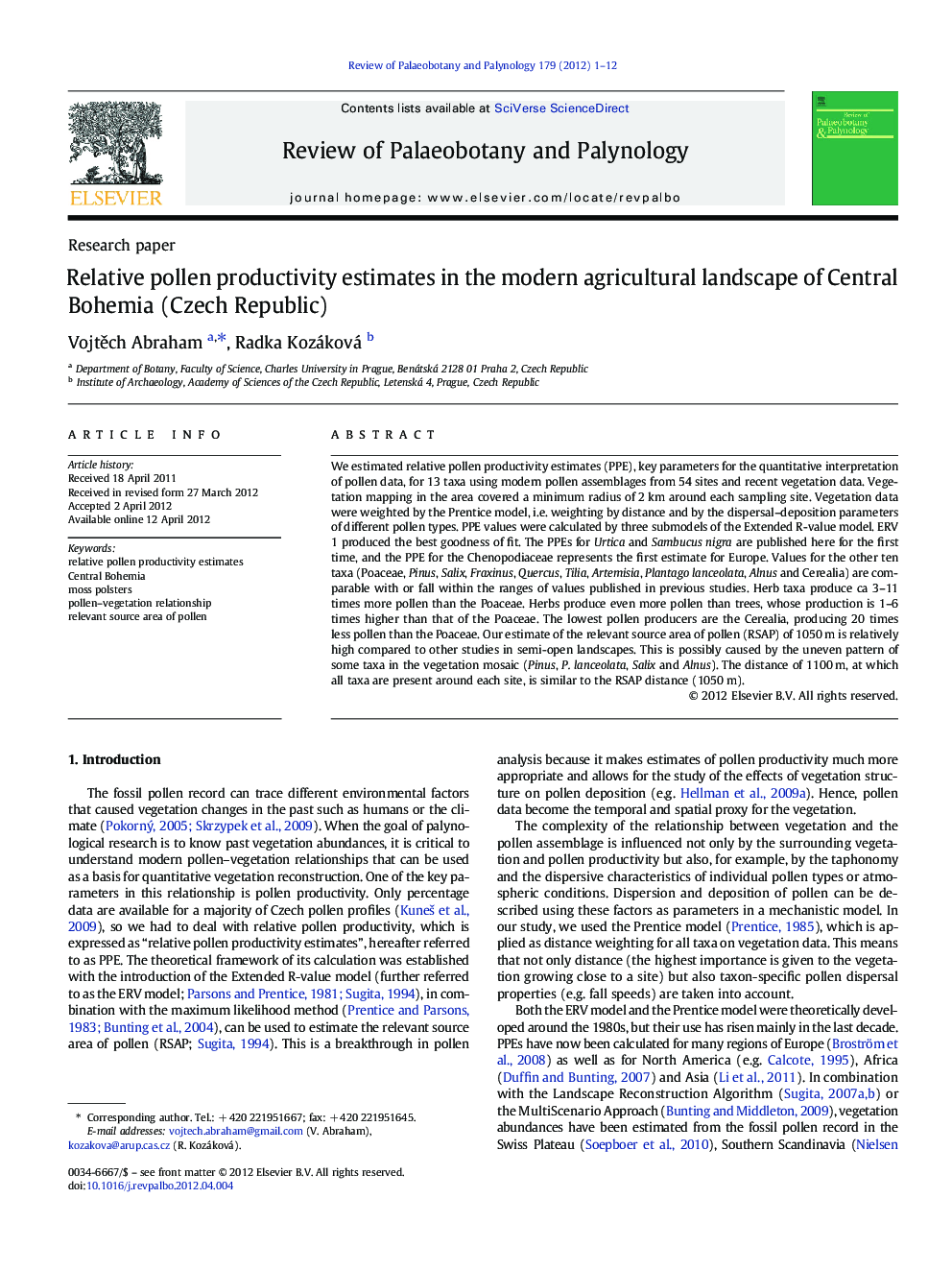| Article ID | Journal | Published Year | Pages | File Type |
|---|---|---|---|---|
| 4750507 | Review of Palaeobotany and Palynology | 2012 | 12 Pages |
We estimated relative pollen productivity estimates (PPE), key parameters for the quantitative interpretation of pollen data, for 13 taxa using modern pollen assemblages from 54 sites and recent vegetation data. Vegetation mapping in the area covered a minimum radius of 2 km around each sampling site. Vegetation data were weighted by the Prentice model, i.e. weighting by distance and by the dispersal–deposition parameters of different pollen types. PPE values were calculated by three submodels of the Extended R-value model. ERV 1 produced the best goodness of fit. The PPEs for Urtica and Sambucus nigra are published here for the first time, and the PPE for the Chenopodiaceae represents the first estimate for Europe. Values for the other ten taxa (Poaceae, Pinus, Salix, Fraxinus, Quercus, Tilia, Artemisia, Plantago lanceolata, Alnus and Cerealia) are comparable with or fall within the ranges of values published in previous studies. Herb taxa produce ca 3–11 times more pollen than the Poaceae. Herbs produce even more pollen than trees, whose production is 1–6 times higher than that of the Poaceae. The lowest pollen producers are the Cerealia, producing 20 times less pollen than the Poaceae. Our estimate of the relevant source area of pollen (RSAP) of 1050 m is relatively high compared to other studies in semi-open landscapes. This is possibly caused by the uneven pattern of some taxa in the vegetation mosaic (Pinus, P. lanceolata, Salix and Alnus). The distance of 1100 m, at which all taxa are present around each site, is similar to the RSAP distance (1050 m).
► Pollen productivity estimates (PPE) for 13 taxa were calculated in Central Bohemia. ► Herbs produce more pollen than trees. ► The lowest pollen producers are the Cerealia, producing 20 times less pollen than the Poaceae. ► Relevant source area of pollen of 1050 m is caused by the uneven pattern of some taxa.
